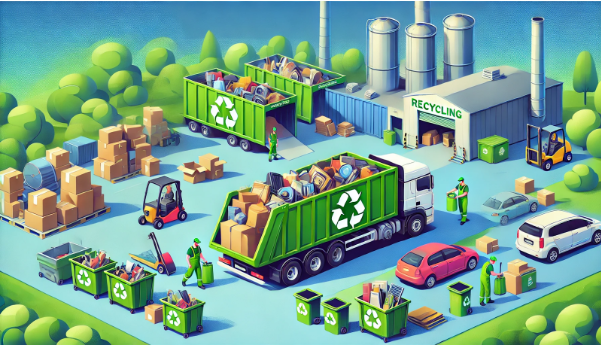
The Ultimate Guide to Recycling Unwanted Items: How to Declutter Sustainably
We all have items in our homes that we no longer need or use. Whether it's old electronics, worn-out furniture, or clothes that no longer fit, getting rid of these items can feel like a daunting task. But rather than just tossing everything in the trash, there’s a better solution: recycling unwanted items. Recycling not only reduces waste but also helps conserve resources and protect our planet. In this guide, we’ll explore how to recycle responsibly, donate items that still have value, and declutter your home in a sustainable way.
Why Recycling Unwanted Items Is Important
1. Reduces Waste in Landfills
Landfills are overflowing with items that could have been recycled or repurposed. By recycling, we reduce the amount of waste that ends up in landfills, which helps reduce pollution and greenhouse gas emissions.
2. Conserves Natural Resources
Recycling saves valuable resources like metals, plastics, and glass. When you recycle items like electronics and metals, you reduce the need for mining new raw materials, which conserves energy and protects natural habitats.
3. Supports a Circular Economy
Recycling promotes a circular economy where products are reused, repurposed, or recycled instead of being thrown away. This reduces the demand for new products and minimizes environmental impact.
4. Helps Your Community
Many items that you no longer need, such as clothes, furniture, and electronics, can be donated to local charities, helping families in need.
Common Items You Can Recycle (and How)
| Item Type | Examples | Recycling Method |
|---|---|---|
| Electronics (E-Waste) | Phones, laptops, tablets | Electronics recycling centers |
| Metals | Aluminum cans, scrap metal | Local scrap yards |
| Plastics | Bottles, containers | Curbside recycling |
| Paper and Cardboard | Newspapers, boxes, magazines | Curbside recycling |
| Glass | Jars, bottles | Glass drop-off locations |
| Textiles | Old clothes, linens, towels | Donation centers, textile recycling |
Eco-Friendly Recycling Tips
1. Start Composting Organic Waste
Composting is an effective way to recycle organic materials like vegetable scraps, coffee grounds, and yard waste.
2. Buy Recycled Products
Support the recycling industry by purchasing products made from recycled materials, such as paper, plastics, and textiles.
3. Practice Minimalism
Adopting a minimalist mindset helps reduce the amount of junk you accumulate. Focus on buying what you truly need and avoid impulse purchases.
4. Host a Swap Party
Organize a swap event with friends and neighbors where you can exchange items like clothes, books, and home goods. This helps keep items out of the landfill while getting something new in return.
FAQs on Recycling Unwanted Items
Q1: What should I do with old electronics?
Electronics should never be thrown in the trash because they contain toxic materials. Instead, take them to a certified e-waste recycling center.
Q2: Can all plastics be recycled?
Not all plastics are recyclable. Check the recycling code on the item—plastics labeled with codes #1 and #2 are widely accepted, while others may not be.
Q3: How can I recycle old clothing and textiles?
Many thrift stores and clothing retailers accept old textiles for recycling. You can also donate gently used items to local shelters.
Q4: What’s the best way to dispose of hazardous waste?
Contact your local waste management facility for guidelines on properly disposing of hazardous materials like paint, chemicals, and batteries.
Quick & Reliable
We are available by phone or email
Cities we service
Services
All Rights Reserved | MetroWest Disposal Powered by Junk Removal Money
